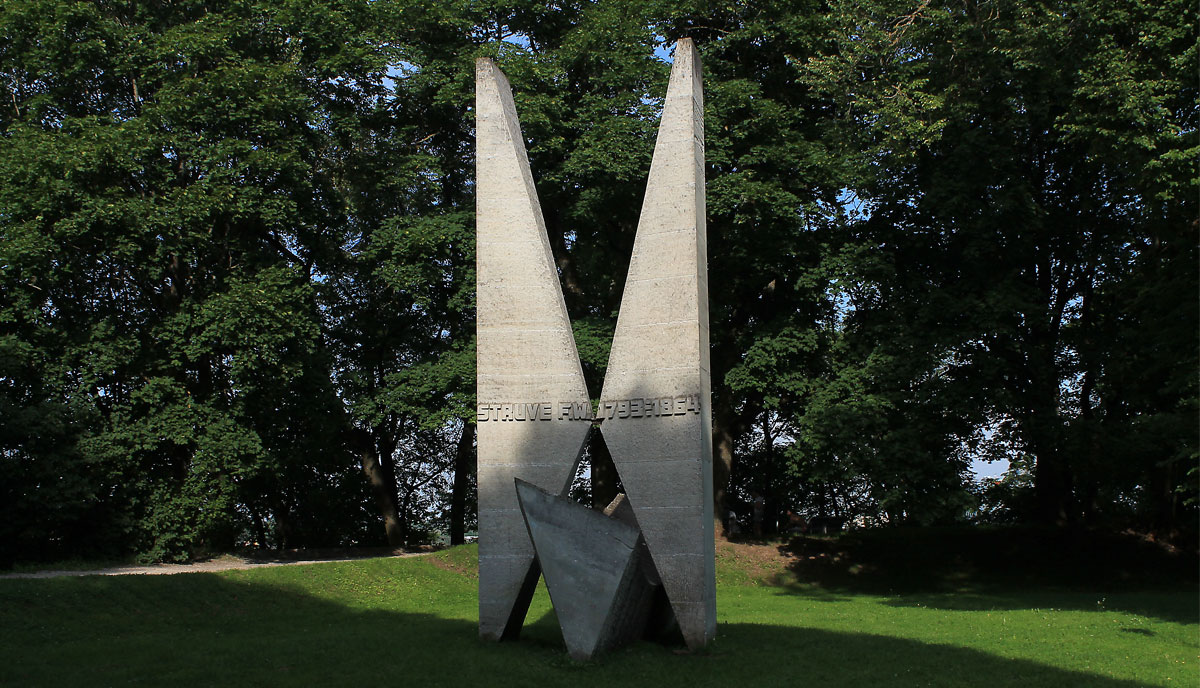
Friedrich Georg Wilhelm Struve Monument
The Struve Monument is located near the Tartu Observatory, in Toomemäe Park. This monument, essentially an abstraction, was unveiled in 1969. Its creators are sculptor Olav Männi and architect Udo Ivask.
What is Struve famous for?
Friedrich Georg Wilhelm Struve was a renowned astronomer and considered one of the founders of modern astronomy. He received a philological education at the University of Tartu, but later devoted his life to the natural sciences. Struve’s significant contribution to science was the creation of the geodetic arc named after him.
Between 1818 and 1839, Struve led the Tartu Observatory. Here, a meridian circle was installed, with which scientists engaged in creating geodetic maps. In 1839, Struve took charge of the Pulkovo Observatory, where he continued his study of celestial bodies.
The Significance of the Monument
According to the monument’s creators, the abstract composition symbolizes humanity’s eternal aspiration toward the stars and cosmic spaces. The lower part of the monument represents cylindrical sundials, while the pillars symbolize slightly modified hourglasses. Only an inscription on one of its sides indicates that the composition is dedicated to Struve.
Location on the Map
Other Points of Interest
- In front of the Vanemuine Theatre stands a grand monument to Eduard Tubin, an Estonian composer.
- On Tartu’s Vabaduse boulevard, there is a monument to Oskar Luts, an Estonian writer, notable for its interesting manufacturing technique.
- In the center of Tartu, one can see a monument to Nikolay Pirogov, a great Russian scientist and surgeon who taught at the University of Tartu.
